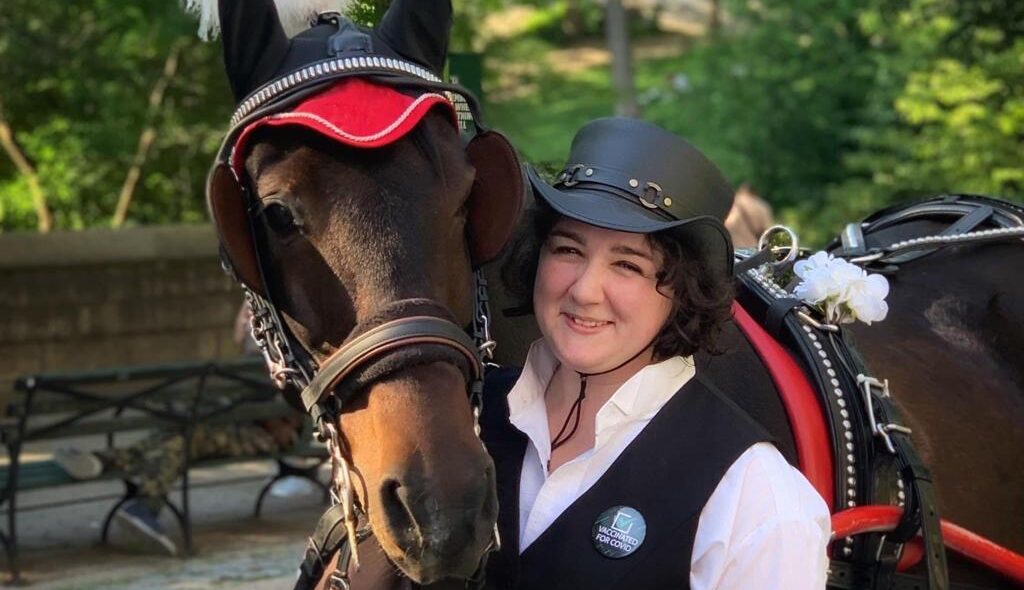Aren’t Horses Cold in the Winter?



Horses grow a winter coat enabling them to tolerate cold weather – even temperatures below zero – without a problem. The thicker and coarser winter hair encapsulates a thin layer of air that serves as insulation. Think of it as an all-natural parka.
The two coat cycles – winter and summer – are triggered by changes in daylight. Horses start growing their winter coat as the days get shorter in late summer. Their winter coat is quite dense and can be quite long and fluffy, depending on the regional climate.
Carriage horses on vacation on pastures in the fall and winter grow thicker coats than the horses working here in the city, which spend more time indoors in warmer stables and wear blankets at work. Sometimes they grow such a thick coat that they need to get a haircut so they don’t get too hot working in the city.
Each horse hair has a muscle, called the erector pili, that allows the nervous system to stand it up or lay it flat. (Humans have these too, but they’re mostly non-functional, though you will see them at work when you get goosebumps!)

Sometimes you’ll hear horses referred to as “hay burners” – their digestive system generates a lot of heat! In fact, horses have a resting body temperature of 100.4 F, compared to our 98.6 F.
Horses’ muscles also produce a lot of heat, so you will see horses moving around quite a bit in the winter to keep warm. They’re more inclined to move around when it is cold out than when it is hot since the extra heat from their muscles can make them uncomfortably warm in the summer.
Horses handle the cold quite well, and really only get uncomfortable when it is cold and wet (because the water will flatten their coat to their skin) or cold and windy (because the wind will disturb the warm layer of insulating air trapped in their fluffed up coat, and dissipate heat). A horse that is truly cold will shiver.
In New York City, carriage horses do not go out when the temperature is below 19F. When it is below 40 F, they wear blankets in the stands while waiting for rides, since they are not moving around then. When it is below 55 F, carriage horses are required to wear raincoats to keep them dry if it is raining or snowing. The stables are required to be kept at least 35 F. Some of the stables have supplemental heat, but the radiant body heat of all the horses inside keeps the stables quite toasty. It is undesirable to have too much of a temperature difference between the indoors and the outdoors.

There is a lot of debate among horse people about blanketing or otherwise interfering with a horse’s natural ability to regulate their body temperature. One thing we do know is that horses are highly adaptable outdoor animals, and the regulations in place in New York City protect them well from weather.